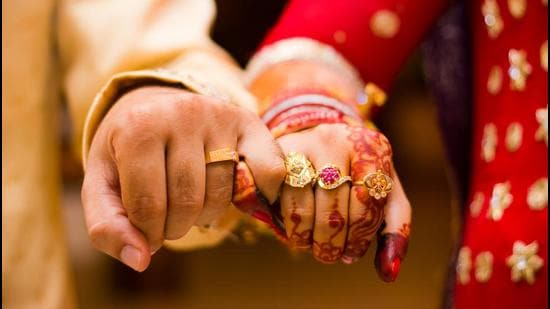Thinking beyond love and arranged marriages
Contemporary Indian romance, intimacies, and marriages are far more complex than surveys, reality TV shows, or social institutions make them out to be
They say marriages are made in heaven, and as a sociologist, I was curious to know how these are actualised on earth.

This question became more poignant with discourses on modernity that gripped Indian society, particularly since liberalisation, according to which, our progress was defined by a definitive turn to “choice” in marriage.
An important contributor to this discourse was large-scale surveys that claimed to reveal whether Indians prefer “love” or “arranged” marriages, if their choice of spouse is influenced or determined by their parents, and if caste plays a role in this decision-making.
My research set out to explore what these categories of arranged and love mean for the urban Indian middle-class, and what is a modern process of matchmaking. It revealed several interesting aspects including the role of pre-marital relationships, gendered expectations of a supporting wife and a providing husband, and the impact of the professionalisation of matchmaking services.
Here are three prominent aspects of the research. First, it was evident that the categories of arranged and love marriage were not always used by the urban middle-class as a finality. This is to say, often when either of these categories was used to explain one’s own matchmaking experience, an addendum followed: “We met through parents, and then fell in love” or “we met at university, but parents’ approval was important”.
To add to this, matchmaking avenues such as matrimonial bureaus and websites, claim exclusivity on the ground that they cater both to a prospective spouse and their family’s criteria of spouse selection. This makes it difficult to see “arranged” and “love” as neat categories, and while at times the category of “arranged-cum-love” is used, it too is not considered as adequate to explain otherwise complex decision-making.
Second, there is a strong narrative of finding love, compatibility and connection, but what stands out is that, underneath all of this, is a clear intent of reproducing class identities. A suitable spouse’s class position is an important consideration adjudged not simply by income or professional status, but increasingly by other forms of signalling such as taste in food, television series, clothes, and exposure to a global way of life.
There were strong opinions about those “above” and “below”, and great pride in ways of the middle, which was best articulated in the values of temperance and sobriety. Class identity in this way was anchored in values, not just materialism.
Finally, the most important takeaway is the need to look at spouse selection not as a static or unilinear practice, and instead as a process where experiences shape decision-making. Typically, surveys and interviews tend to base their analyses on the nature of a society and its people on the outcome of spouse selection.
Such an approach overlooks that an individual’s idea of conjugality, criteria of an ideal spouse, and choice of space of spouse selection (websites, dating apps, bureaus) might have undergone transformations based on their past experiences, particularly of pain, hurt, rejection, and humiliation in love and matchmaking. For instance, a harsh break-up might lead individuals to relegate the entire responsibility of spouse selection to their parents, or an inter-caste/community relationship gone bad can make caste or community identity an important criterion when previously it was not. And as age increases, certain criteria (caste, community) might be relaxed in favour of others (profession, class status).
Urban Indians are pushing their age at marriage to their late 20s and early 30s. Demographers describe this as a phase of “elongated singlehood”. An analysis of this phase is crucial to properly grasp the practices of matchmaking, for it is the experiences of this phase that shapes decisions on marriage in unanticipated ways, often challenging stereotypes of binaries of arranged and love.
Contemporary Indian romance, intimacies, and marriages are far more complex than surveys, reality TV shows, or social institutions make them out to be. It is a rich array of experiences rife with box-ticking, CV-matching, blazing desires, and distressing traumas, which slip through tired categories of this or that, choice or duty, individual or family, tradition or modernity.
Parul Bhandari is a sociologist and author of Matchmaking in Middle Class India: Beyond Arranged and Love Marriage
The views expressed are personal
All Access.
One Subscription.
Get 360° coverage—from daily headlines
to 100 year archives.



HT App & Website







